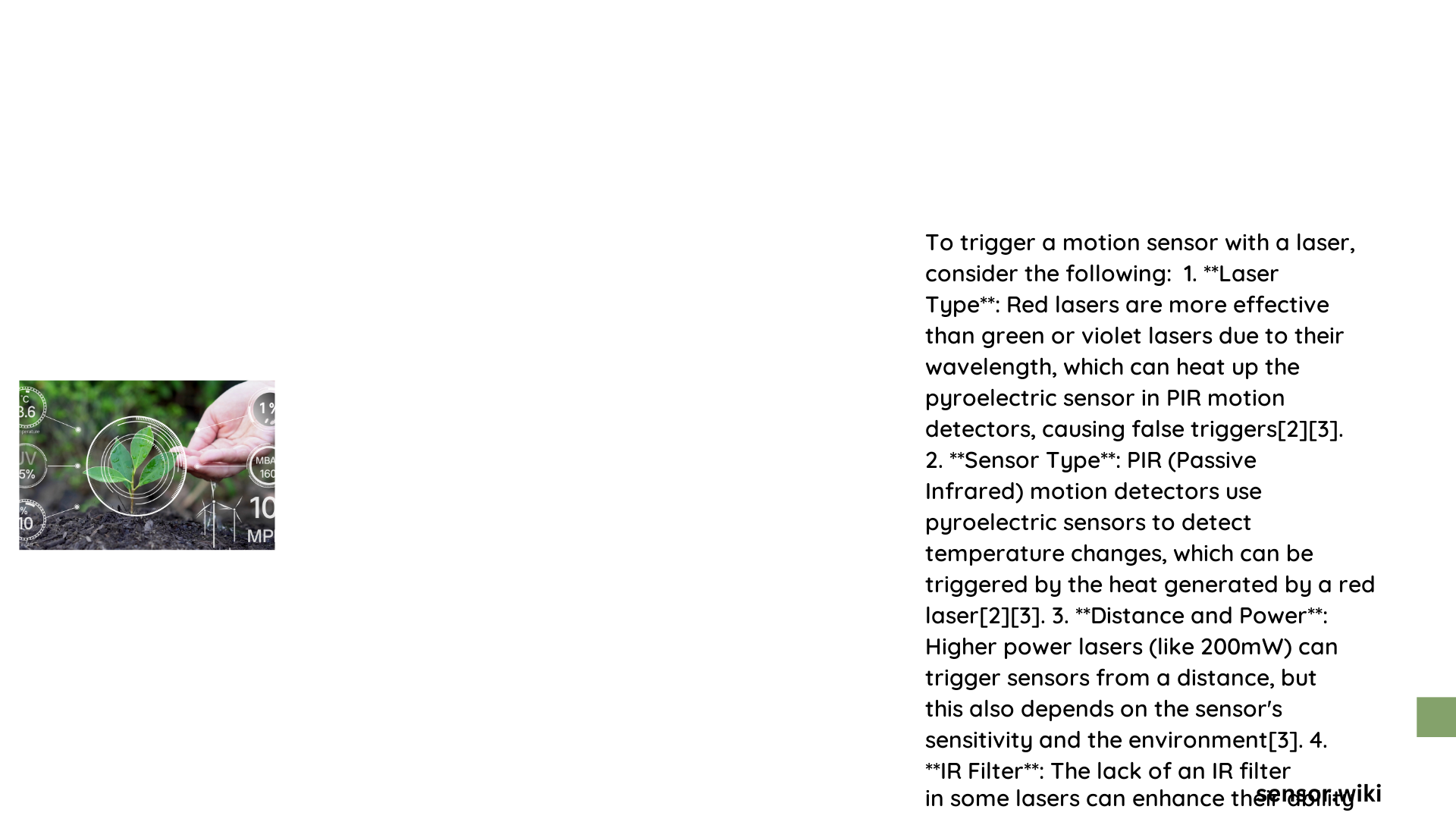Trigger motion sensors with laser represent cutting-edge detection technology that utilizes precise laser beams to identify movement and intrusion across diverse environments. These advanced sensors leverage high-precision laser technology to create invisible detection zones, offering superior accuracy, faster response times, and extended range compared to traditional motion detection methods. By emitting focused laser beams and analyzing interruptions or reflections, these sensors can detect objects, track movement, and trigger security or automation systems with remarkable efficiency.
What Makes Laser Motion Sensors Unique?
Laser motion sensors distinguish themselves through several key technological advantages:
How Do Laser Sensors Detect Movement?
Laser motion sensors operate through two primary detection mechanisms:
- Through-Beam Detection
- Two separate units: transmitter and receiver
- Laser beam continuously transmitted between units
- Object interruption triggers sensor response
-
Ideal for long-distance detection
-
Retroreflective Detection
- Single unit with laser and receiver
- Laser beam reflects off specialized reflective surface
- Object interruption changes reflection pattern
- Suitable for medium-range applications
What Are the Key Performance Specifications?
| Specification | Typical Range |
|---|---|
| Detection Distance | 1-40 meters |
| Response Time | 0.5 ms or less |
| Beam Width | 15-120 mm |
| Temperature Range | -20°C to 60°C |
What Technical Components Enable Precise Detection?
Critical components in laser motion sensors include:
- High-precision semiconductor lasers
- Advanced optical filtering systems
- Digital signal processors
- Robust housing with environmental protection
- Adjustable sensitivity mechanisms
How Are Laser Motion Sensors Calibrated?
Calibration involves multiple sophisticated techniques:
- Manual sensitivity adjustment
- Automatic intensity compensation
- Environmental noise reduction
- Adaptive threshold settings
- Interference prevention algorithms
What Industries Benefit from Laser Motion Sensors?
Laser motion sensors find applications across diverse sectors:
- Security and surveillance
- Industrial automation
- Robotics
- Warehouse management
- Traffic monitoring
- Agricultural technology
What Challenges Do Laser Motion Sensors Address?
Laser motion sensors overcome traditional detection limitations:
- Minimal false triggers
- Long-range detection capabilities
- High precision targeting
- Performance in challenging environments
- Quick response times
- Low maintenance requirements
What Future Developments Are Expected?
Emerging trends in laser motion sensor technology include:
- Enhanced AI-driven detection algorithms
- Improved miniaturization
- Integration with IoT platforms
- Multi-spectral sensing capabilities
- Lower power consumption designs
Practical Considerations for Implementation

When implementing trigger motion sensors with laser, consider:
- Specific environmental conditions
- Required detection range
- Integration with existing systems
- Power supply requirements
- Budget constraints
Conclusion
Trigger motion sensors with laser represent a sophisticated technological solution for precise movement detection, offering unprecedented accuracy and reliability across multiple applications.
